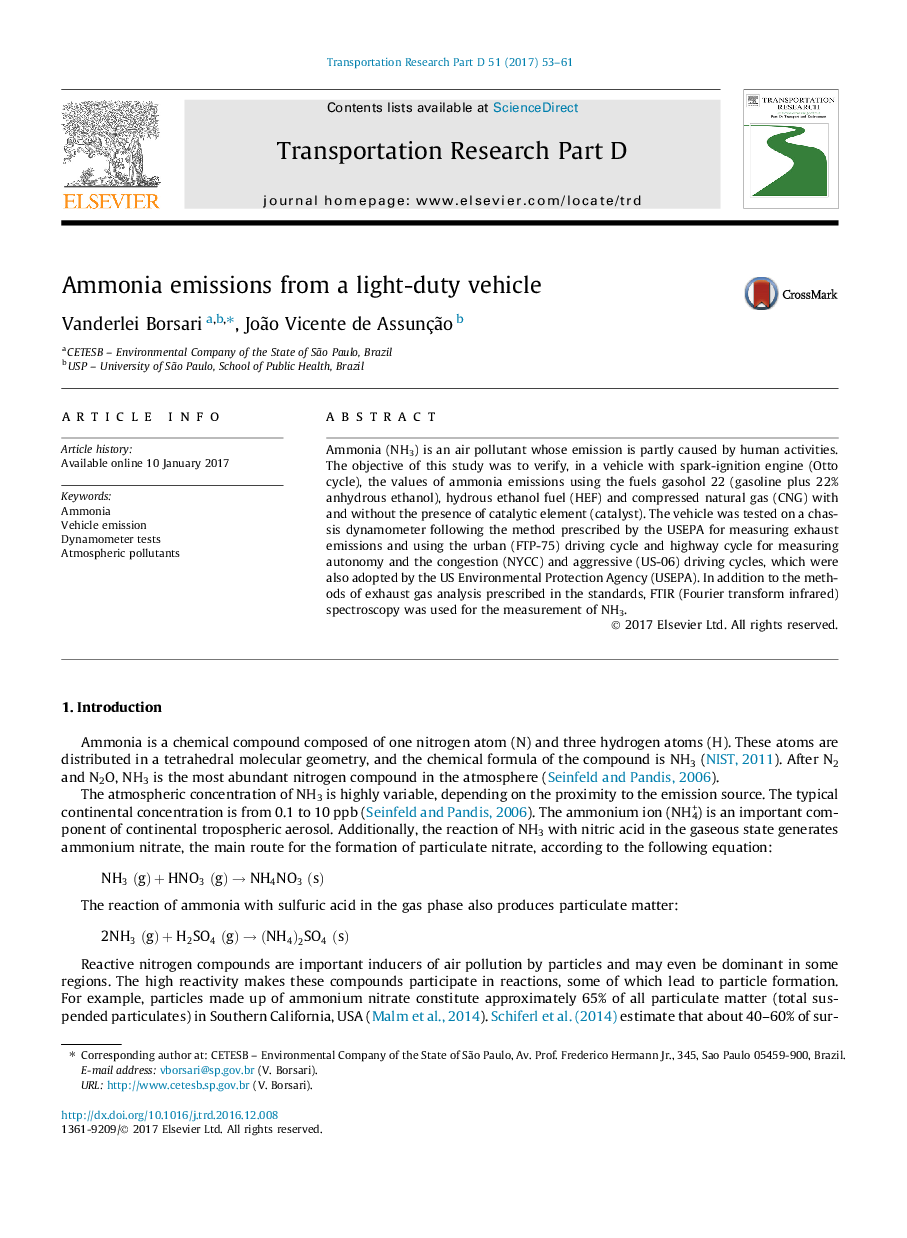| Article ID | Journal | Published Year | Pages | File Type |
|---|---|---|---|---|
| 5119387 | Transportation Research Part D: Transport and Environment | 2017 | 9 Pages |
â¢Ammonia emissions were not significantly dependent on the type of fuel used.â¢Driving conditions influenced the ammonia emission levels.â¢Ammonia emission levels were dependent on the presence or absence of a catalytic converter in the vehicle.
Ammonia (NH3) is an air pollutant whose emission is partly caused by human activities. The objective of this study was to verify, in a vehicle with spark-ignition engine (Otto cycle), the values of ammonia emissions using the fuels gasohol 22 (gasoline plus 22% anhydrous ethanol), hydrous ethanol fuel (HEF) and compressed natural gas (CNG) with and without the presence of catalytic element (catalyst). The vehicle was tested on a chassis dynamometer following the method prescribed by the USEPA for measuring exhaust emissions and using the urban (FTP-75) driving cycle and highway cycle for measuring autonomy and the congestion (NYCC) and aggressive (US-06) driving cycles, which were also adopted by the US Environmental Protection Agency (USEPA). In addition to the methods of exhaust gas analysis prescribed in the standards, FTIR (Fourier transform infrared) spectroscopy was used for the measurement of NH3.
Graphical abstractDownload high-res image (87KB)Download full-size image
